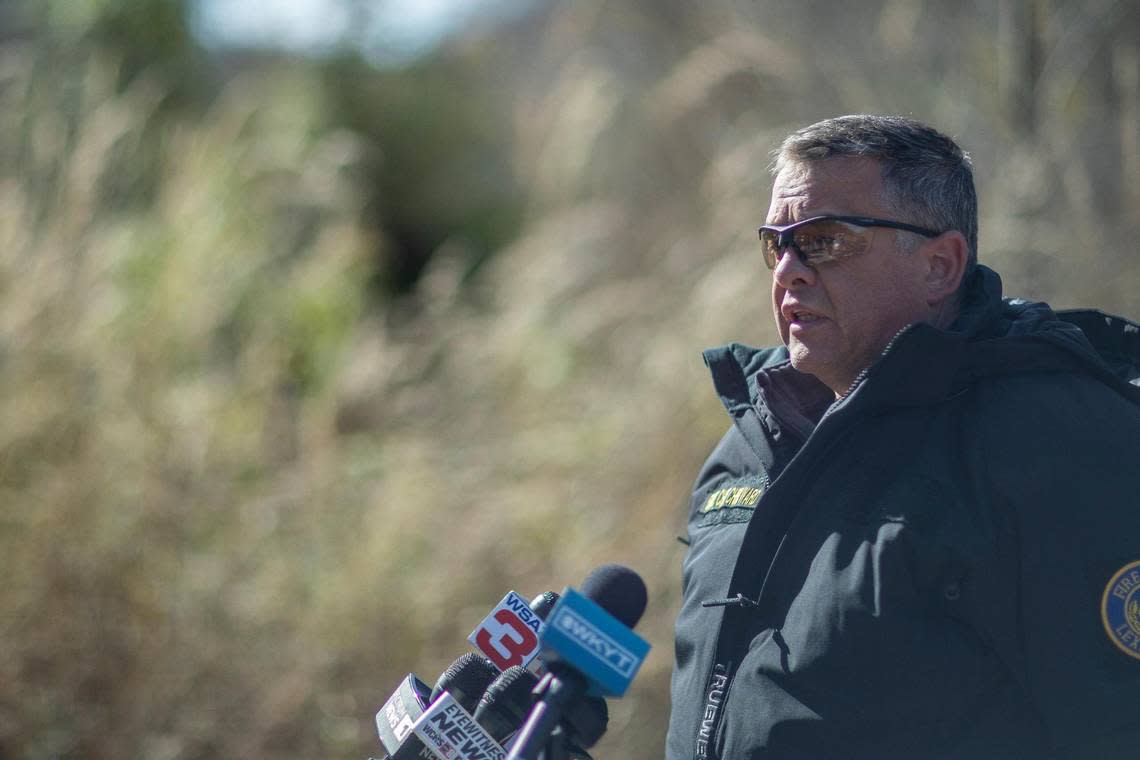Coal plant collapse: Search and rescue is risky and complex. We asked how it works

Responders in Martin County — where an 11-story coal processing plant collapsed earlier this week — were still working Thursday to free a man trapped under the rubble and said the operation remains a search and rescue.
Another man who had been trapped has been confirmed dead after the plant’s collapse Tuesday, and there are dangers for the responders as well, who must carefully sift through a mountain of concrete and steel while avoiding subsequent collapses.
The Lexington Fire Department, along with many other emergency management agencies across Kentucky, has responded to the disaster. In the case of LFD, it sent structural collapse specialists to assist in Martin County. Media reports indicate at least 17 agencies were assisting with the search efforts this week.
To get a better understanding of the work first responders do and how search and rescue teams operate, we spoke with LFD Assistant Chiefs Scott Whitt and Robert Larkin, who together handle the agency’s operations and planning efforts. Here’s what to know about how search and rescue operations work.
What do responders do after the call comes in?
As explained by Whitt, some emergency management agencies have more resources than others.
To level the playing field, they coordinate and work together to share personnel, equipment and expertise when needed because, according to Larkin, “emergencies start locally and ultimately they end locally.”
This perspective on disaster response is a bedrock premise of the National Incident Management System, or NIMS, which facilitates cooperation between emergency management agencies. Think of it as a set of best practices for each stage of response in a disaster that everyone in the emergency management world is generally familiar with and trained in.
Another central pillar of NIMS is communication and the concept that communication should be “interoperable,” meaning there should be effective communication within and across agencies and jurisdictions.
In the case of a complex and resource-intensive search and rescue operation, like the one unfolding in Martin County, the request for additional support is made to a more centralized authority, like the state-level Kentucky Emergency Management agency, but it doesn’t end there.
Responders at the LFD were actually alerted to the disaster by the fire department in Ashland, Larkin said.
“We all talk and we all work together,” Larkin said.
How is a search and rescue operation performed?
As with any disaster, there is an initial “size-up,” which is the process of gathering and assessing information that begins when a call is received. It’s a vital first step because it shapes the entire response.
The size-up could involve a number of things, from obtaining building plans or maps to determining and mitigating risks for responders at the scene or even assessing what resources are needed.
Once responders determine what needs to be done, each person is given a specific job. That could be designating one individual as a safety monitor or another as a public-facing representative who can offer information about the response to the media and the broader public.
As for the search and rescue work itself, in cases involving structural collapses, Whitt said the work is carried out by small units who worked under a commander.
“It’s really small unit stuff, four to six members, usually with a squad leader, operating under … that incident command system with an operations position in there” to deliver orders and make decisions, Whitt explained.
The operations lead is empowered to make decisions about where to start removing rubble or where to drill and run search cams, for example.
What’s the danger to first responders?
When it comes to a search and rescue operation involving a collapsed structure, picture the danger a person would encounter while sorting through a large pile of rubble.
Rescuers might encounter broken glass, shattered concrete and steel beams, not to mention any exposed hazardous materials and substances inside the structure at the time of its collapse, like toxic asbestos dust, for example.
“Everything about that atmosphere is unstable,” Larkin said.
Do you have a question about emergency management in Kentucky for our service journalism team? We’d like to hear from you. Let us know via our Know Your Kentucky form below or email ask@herald-leader.com.

